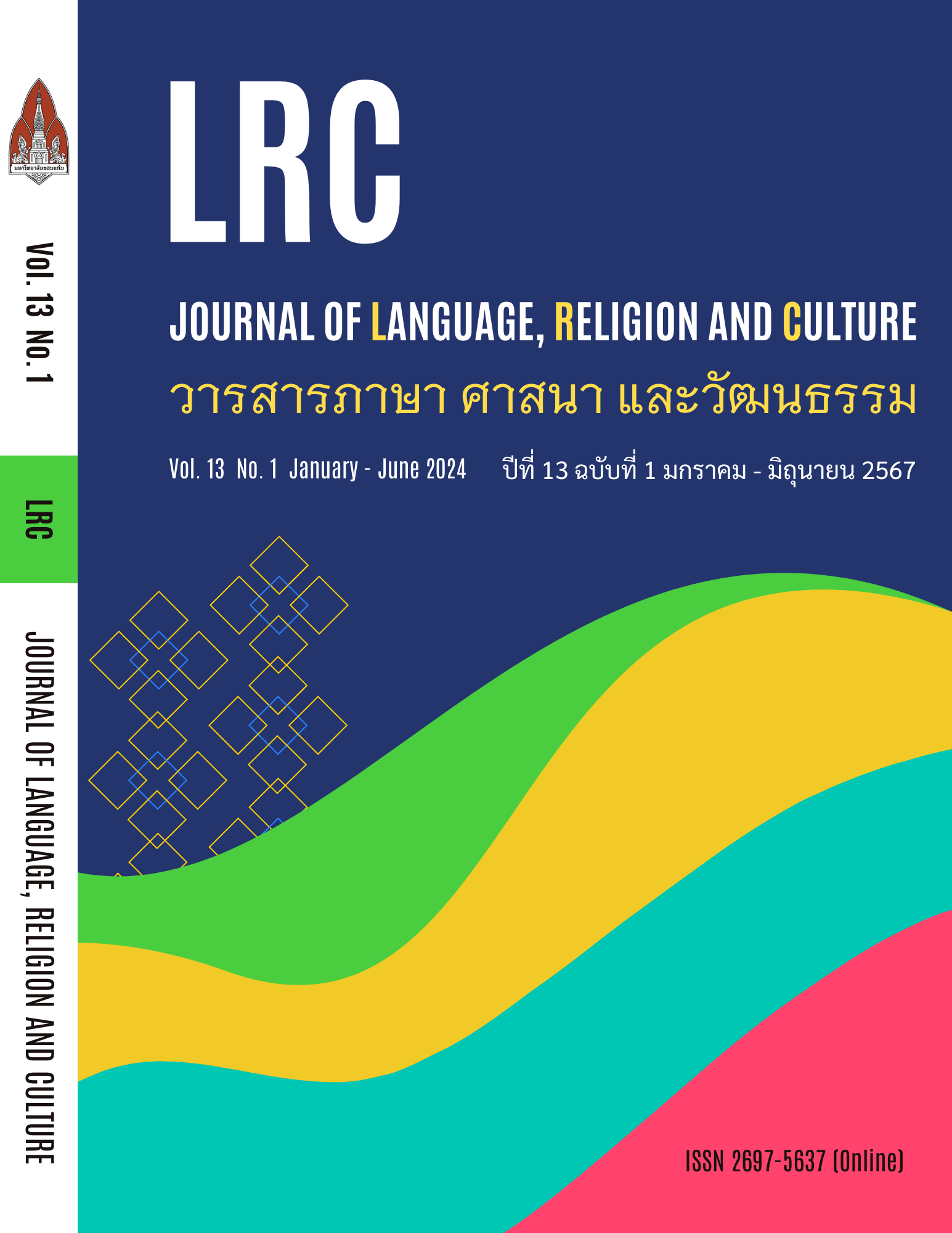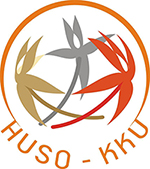การประกอบสร้างคุณค่าการใช้แรงงานของทางการเวียดนามผ่านเรื่องราว “มายอานเตียม"
การประกอบสร้างคุณค่าการใช้แรงงานของทางการเวียดนามผ่านเรื่องราว “มายอานเตียม”
คำสำคัญ:
มายอานเตียม, การประกอบสร้าง, ทางการเวียดนาม, ตำนาน, คุณค่าการใช้แรงงานบทคัดย่อ
บทความชิ้นนี้มีวัตถุประสงค์เพื่อ 1) นำเสนอความเป็นมาของตำนานมายอานเตียมซึ่งเป็นตำนานมาจากยุคหุ่งเวือง (Hùng Vương) หรือยุคแรกเริ่มของการสร้างบ้านแปลงเมืองของชนชาติกิง (Kinh) (2) ตำแหน่งบทบาทของมายอานเตียมด้านต่าง ๆ ของเวียดนามตั้งแต่อดีตจนถึงปัจจุบัน (3) การประกอบสร้างคุณค่าการใช้แรงงานของทางการเวียดนามผ่านเรื่องราว มายอานเตียมในปัจจุบัน ใช้วิธีวิจัยเชิงคุณภาพ และการวิเคราะห์ข้อมูลจากเอกสารทางประวัติศาสตร์ที่เป็นหลักฐานบันทึกจากสมัยโบราณและปัจจุบัน ดังนี้ หนังสือพงศาวดาร หนังสือประวัติศาสตร์ พระราชกฤษฎีกา หนังสือคลังนิทานปรัมปราเวียดนาม แบบเรียนชั้นประถมศึกษา และดวงตราไปรษณียากรณ์ เป็นต้น การศึกษาพบว่า ตำนานมายอานเตียมได้ปรากฎครั้งแรกในเอกสารเวียดนามตั้งแต่ปีค.ศ. 1492 ในตำนานดังกล่าวมายอานเตียมได้ปรากฏในรูปแบบของ 1) บุคคลในยุคหุ่งเวือง: ยุคก่อร่างสร้างบ้านแปงเมืองของชนชาติกิง 2) ผู้ให้กำเนิดแตงโมในเวียดนาม 3) เทพเจ้าของผู้คนในตำบลงาฟู้ อำเภองาเซิน จังหวัดแทงฮว้า 4) ด้วยตำแหน่ง บทบาทที่สำคัญตำนานมายอานเตียมจึงได้รับการประกอบสร้างจากทางการเวียดนามโดยเน้นการประกอบสร้างคุณค่าการใช้แรงงาน ซึ่งสอดคล้องกับอุดมการณ์พรรคคอมมิวนิสต์เวียดนามและแนวคิดของ
โฮจิมินห์ (Hồ Chí Minh) เพื่อส่งผ่านชุดความคิดเหล่านี้ไปยังเยาวชนคนหนุ่ม-สาวรุ่นใหม่และสังคมเวียดนามโดยรวมในรูปแบบดังกล่าวโดยปรากฏในตำราเรียนชั้นประถมมากกว่า 30 ปีและอยู่ในดวงตราไปรษณียากรปี ค.ศ. 2021
เอกสารอ้างอิง
Anh Ngoc, N. (2021). Lễ hội Mai An Tiêm và truyền thuyết ông tổ nghề trồng dưa hấu เทศกาลมายอานเตียมและตำนานเกี่ยวกับบรรพบุรุษของการปลูกแตงโม. Https://Baothanhhoa.vn/van-HoaGiai-Tri/Le-Hoi-Mai-an-Tiem-va-Truyen-Thuyet-Ong-to-Nghe-Trong-Dua-Hau/135157.Htm.
Dinh Gia Khanh, & Nguyen Ngoc San. (1960). Lĩnh Nam Chích Quái.
Do Da Sy, D. (2009). Tìm hiểu văn hóa cổ truyền trên tem bưu chính Việt Nam เรียนรู้เกี่ยวกับวัฒนธรรมดั้งเดิมบนดวงตราไปรษณียากรเวียดนาม. Thông tin và truyền thông.
Ha Đong, P. (2009). Thanh Hóa: lưu giữ sắc phong về Mai An Tiêm แทงฮว้าเก็บรักษาพระราชกฤษฎีกาของมายอานเตียม. Https://Tuoitre.vn/Thanh-Hoa-Luu-Giu-Sac-Phong-ve-Mai-an-Tiem340355.Htm.
Hoang An, P. (2020). Hội đồng tư vấn quốc gia tem bưu chính chọn 4 mẫu tem cho năm 2021.Https://Mic.Gov.vn/Mic_2020/Pages/TinTuc/142272/Hoi-Dong-Tu-van-Quoc-Gia-Tem-BuuChinh-Chon-4-Mau-Tem-Cho-Nam-2021.Html.
Ngo Si Lien & Phan Phu Tien & Le Van Huu. (1993). Đại việt sử ký toàn thư ดายเหวียดสือกี๊ตว่านทือ(Nhà Xuất bản Khoa học Xã hội, Ed.).
Nguyen Dong Chi, N. (2000). Kho tàng truyện cổ tích Việt Nam คลังนิทานปรัมปราเวียดนาม 957.
Nguyen Manh Hung, N. (2021). Thông tư quy định về tem bưu chính หนังสือเวียนระเบียบว่าด้วยตรา
ไปรษณียากร.
Nguyen Tan Dung, N. (2011). Nghi Dinh Chi Tiet Thi Hanh Mot So Noi Dung Cua Luat Buu Chinh.
Nguyen Thi Bich Hanh, N. (2021). Phong thủy và tín ngưỡng thờ thần thánh tại các tứ trấn ViệtNam (Kỳ 9): Sự sáng tạo của tín ngưỡng thờ Thành hoàng làng ฮวงจุ้ยกับคติการบูชาเทพเจ้าทั้งสี่เมืองของเวียดนาม (สมัยที่9) การสร้างลัทธิเทพเจ้าประจำหมู่บ้าน. Https://Baophapluat.vn/Phong Thuy-va-Tin-Nguong-Tho-than-Thanh-Tai-Cac-Tu-Tran-Viet-Nam-Ky-9-Su-Sang-Tao-Cua-TinNguong-Tho-Thanh-Hoang-Lang-Post417488.Html.
Nguyen Thi Ngoc, N. (2018). Triết lý nhân sinh trong truyện cổ tích với việc giáo dục thế hệ trẻ Việt Nam hiện nay. Https://www.tapchicongsan.org.vn
Nguyen Thi Kim Ngan, N. (2016). Luật tín ngưỡng tôn giáo.
Nguyen Van Duc, N. (2023). Thời đại Hùng Vương và ý thức về Ngày quốc giỗ của cộng đồng cácdân tộc Việt Nam ยุคฮุ่งเวืองและการตระหนักวันบูชาแห่งชาติเวียดนาม.
Https://Tuyenquang.Dcs.vn/DetailView/132289/25/Thoi-Dai-Hung-Vuong-va-y-Thuc-ve-NgayQuoc-Gio-Cua-Cong-Dong-Cac-Dan-Toc-Viet-Nam.Html.
Phan Huy Chu, P. (1972). Lịch triều hiến chương loại chí หลิกเจี่ยวเฮี้ยนเจืองหลอยจี้.
Thai Dung, T. (2011). Hoạt động thương mại thời Vua Hùng diễn ra như thế nào? การค้าขายในยุคฮุ่
งเวืองมีลักษณะอย่างไร.
Thao Nguyen, H. (2021). Ý Nghĩa Truyện Cổ Tích Sự Tích Quả Dưa Hấu.Https://Sachhay24h.Com/y-Nghia-Truyen-Co-Tich-Su-Tich-qua-Dua-Hau-A765.Html.
Hoang An, T. (2021). Giới thiệu bộ tem “Truyền thuyết Mai An Tiêm (Sự tích quả Dưa hấu).”บริษัทไปรษณีย์เวียดนาม.
Tran Cao Son, T. (2012). Truyền thuyết quả dưa hấu - Mai An tiêm dưới góc nhìn xã hội học lịchsử ตำนานแตงโม - มายอานเตียม จากมุมมองทางสังคมศาสตร์และประวัติศาสตร์. Tạp Chí Khoa HọcXã Hội Việt Nam วารสานวิทยาศาสตร์และสัมคมเวียดนาม, 2, 37-44.
Tran Hau Yen The, T. (2021). Quý ông Lạch Trường và huyền tích Mai An Tiêm ” ได้วิเคราะห์เกี่ยวกับความเชื่อมโยงระหว่างตำ. Tạp Chí Mỹ Thuật นิตยสารวิจิตรศิลป์.
Vo Quang Yen, V. (2013). Tây qua, dưa hấu เตวกวา แตงโม. Tạp Chí Nghiên Cứu và Phát Triểnวารสารวิจัยและพัฒนา, 1, 102–107.
Vu Thi Phuong, V. (2013). Truyện cổ tích và vai trò của truyện cổ tích đối với việc giáo dục học sinh tiểu học.
Vuong Xuan Tinh, V. (2015). Các dân tộc ở Việt Nam กลุ่มชาติพันธุ์อยู่ในเวียดนาม (Vol. 1). Nhà xuất bản chính trị quốc gia สำนักพิมพ์การเมืองระดับชาติ.
ดาวน์โหลด
เผยแพร่แล้ว
รูปแบบการอ้างอิง
ฉบับ
ประเภทบทความ
สัญญาอนุญาต
ลิขสิทธิ์ (c) 2024 วารสารภาษา ศาสนา และวัฒนธรรม

อนุญาตภายใต้เงื่อนไข Creative Commons Attribution-NonCommercial-NoDerivatives 4.0 International License.







